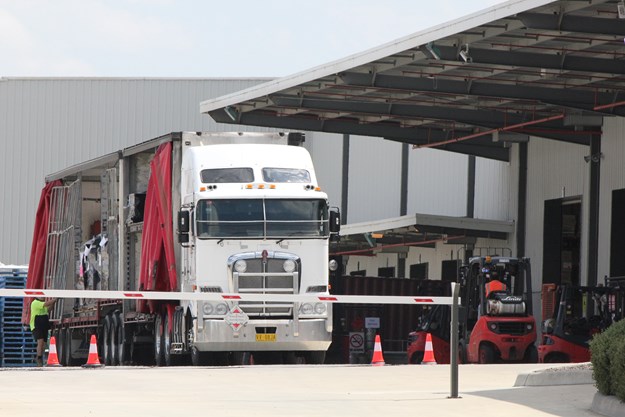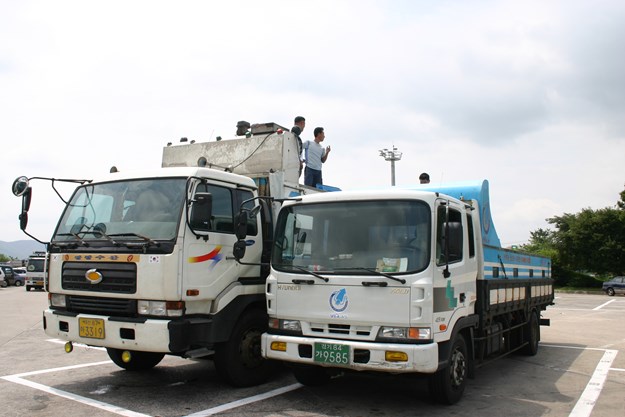The United Nations is demanding that trucking customers pay owner-drivers in 30 days – and that truckies be treated much better in a whole lot of other ways too
 |
|
The International Labour Organisation says all drivers should be paid for loading and unloading and other non-driving time
|
Among all the bitterness involved in Australia’s owner-driver “minimum rates” drama a few years ago, a couple of uncontroversial things are easily forgotten. One of them is this: trucking companies, owner-drivers, union reps, bureaucrats and a lot of politicians agree that customers should be forced to pay truckies promptly.
Both the Australian Trucking Association (ATA) and Transport Workers Union (TWU) want national rules mandating that customers have to pay owner-operators in 30 days.
New guidelines from the United Nations’ International Labour Organisation (ILO) back this up.
“Through national regulation, governments should ensure that non-wage-earning CMV (commercial motor vehicle) driver contracts are transparent and that invoices or claims for payment are paid within 30 days,” says a recent document.
You can’t get much clearer than that, and as we reported recently, both ATA chair Geoff Crouch and TWU national secretary Michael Kaine welcome the recommendation.
Both were involved in last September’s ILO meeting in Geneva which produced the Guidelines on the promotion of decent work and road safety in the transport sector.
According to its website, the ILO brings together governments, employers and workers from 187 UN member countries to set labour standards.
 |
|
ATA Chair Geoff Crouch represented Australian and New Zealand truck and bus businesses at the meeting International Labour Organisation meeting in Geneva
|
Paid waiting time?
Another point of general agreement between trucking employers, employees and owner-drivers during the ill-fated days of the Road Safety Remuneration Tribunal (RSRT) was this: customers should pay trucking companies – and therefore drivers – for waiting time.
The recent ILO transport guidelines make for interesting reading on this, including clause number 76 which says governments should “establish mechanisms to encourage predictable cost recovery” for contractor drivers.
This includes variable costs such as fuel and tyres; return on investment in trucks; payment for personal labour at the national minimum-wage rate or higher; “time expended in relation to loads”; other non-driving time – presumably including waiting time; and even time spent on maintenance.
That sounds almost what the RSRT was supposed to achieve.
Not surprisingly the ILO says that as well as contractor drivers, company drivers should be paid for non-driving time too.
Of course it’s widely regarded in Australia as a farce that kilometre or trip rates for company drivers often supposedly include payment for an hour or two waiting time, loading and unloading.
 |
|
South Korean trucking: Globally, owner drivers and small to medium-sized companies make up the majority of the industry
|
Tough industry
The ILO says the increasing use of subcontracting in road freight over the past 20 years has made competition more intense. It seems that just as in Australia, around the world owner drivers and small to medium-sized companies make up the majority of the industry.
Meanwhile: “Workers in the sector, including dependent self-employed workers, are vulnerable, as they often must absorb the costs of ownership, maintenance and other vehicle operating costs while they may not be able to participate in social dialogue and may not benefit from the protection … provided to other workers,” says the ILO.
“The road transport industry is characterised and impacted by multiple supply chains and contracting chains which often lead to pressures on margins that can leave transport workers unable to exercise their fundamental principles and rights at work.”
But it’s not necessarily all bad news.
“Operating a small road transport business, including as a self-employed worker or owner-operator, can be the road to opportunity, financial independence and flexibility,” say the ILO guidelines.
“A strong framework of business and safety regulations can encourage these small businesses and ensure they comply with national laws and regulations.”
 |
|
Recognition: A statue of workers commemorating the International Labour Organisation in Geneva, Switzerland
|
Driver health and welfare
Not surprisingly, the ILO guidelines state that the road transport sector has high occupational health and safety risks compared to other sectors, including aviation and rail.
How’s this for a list of possible health concerns: stress, anxiety, depression, fatigue, ergonomic factors, musculoskeletal disorders, whole-body vibration disorders, obesity, obstructive sleep apnoea, diabetes, exposure to extreme temperatures, reproductive health issues including risk of miscarriage, high blood pressure, kidney disorders and effects related to the use of drugs and stimulants.
The ILO seems be suggesting the big step of mandatory medical examinations for all truck drivers, which of course isn’t needed for the current standard 12-hour logbook in Australia’s eastern states.
“For obtaining a commercial driving licence, governments should establish regulations requiring … initial and pre-employment and periodical testing conforming to minimum fitness requirements,” say the guidelines.
“These examinations should be carried out fairly and confidentially and should be accompanied by education, prevention and treatment programmes. Appropriate and independent appeals procedures should be made available.”
One of the many “motherhood” statements in the guidelines is that there should be “safe and secure” welfare, rest and parking facilities for drivers.
For example: “A particular barrier for women is lack of access to welfare facilities, particularly sanitation.”
This presumably means more is needed at trucking company depots than simply putting up a sign on the door of the traditionally male showers and toilets block which reads “Unisex”.
Meanwhile it’s no surprise that the ILO says: “Pressure from supply chain entities can be an underlying cause of transport workers adopting riskier and unsafe driving practices. Sometimes, existing laws and enforcement mechanisms address drivers without directly reaching those entities that are at the root of these practices.”
From the sound of that, it’s not just in Australia that drivers are hammered by the authorities while the customers at the top of the chain get off scot-free.
For example as far as this writer is aware, there are still no prosecutions of a customer under the Chain of Responsibility on fatigue.
 |
|
Imposing: The headquarters of the International Labour Organization in Geneva
|
Tougher licensing, decent training
As part of solving the problem of driver shortages, the ILO guidelines say governments should “urgently” professionalise driver training.
“The exercise of this occupation should be dependent on reaching an officially recognised level of qualifications that is proved in a final trade examination and designed to ensure that the trainee has properly assimilated the instruction given to him/her during such training.”
Note the word “trade”. That sounds a lot more comprehensive than simply proving you can back a B-double in a straight line after a couple of days at a driver training school.
“The neglect of training in some countries is one of the causes of the low status and high turnover of CMV drivers in the industry, which lessens productivity and standards of service,” say the guidelines.
“Governments and social partners should agree on their common interest in establishing generally recognised training standards and in promoting active training measures. Governments should take the initiative in the introduction of adequate training schemes, including lifelong learning.”
The guidelines say governments, employers and road transport chain parties should increase the attractiveness of a career behind the wheel to women and young people.
They should also give financial incentives to companies and first-time driver applicants for training; and finance the retraining of older workers to become drivers.
And the following sounds like a good idea for giving young truck enthusiasts a realistic idea of just how tough it is being an owner-driver. As part of the general career counselling and vocational guidance system, prospective drivers should be given neutral information on “economic viability and vehicle operating costs, rates and other financial information”.

